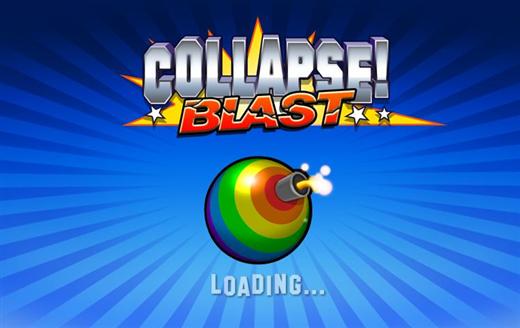

- How to get high score in collapse blast how to#
- How to get high score in collapse blast manual#
If you want a database of known mRNAs (and their translations) then refseq_rna is a good choice.Ĥ) Break up large queries into smaller pieces submit each piece in a separate search. Larger databases obviously contain more sequences and for some queries this results in numerous "background" hits. Often, using tblastx is a measure of last resort a blastx search against a database of known proteins may provide what you need.ģ) Search a smaller database, such as refseq_rna.
/arc-anglerfish-arc2-prod-tronc.s3.amazonaws.com/public/SGH5K6P4QRBEDFCTSQ73BFRDAQ.jpg)
The tblastx program is very CPU intensive as it not only translates the query in six reading frames but every database sequence as well. 2) If using tblastx, try blastx instead.
How to get high score in collapse blast how to#
1.) Enable species specific repeats if applicable, see How to filter out (organism-specific) interspersed repeats. If you get this error, you have numerous options depending on your goals: Most typically this error occurs when the default filters are turned off or when the query sequences have repeat elements in them. However, there are certain searches which could generate a huge amount of data. This is rare as the results have to be several hundred megabytes of information for this to happen. This error occurs when the total number of high-scoring segment pairs (HSPs) is far too many for the BLAST servers to return the results. How to filter out (organism-specific) interspersed repeats? Rather, it is as if the low-complexity region is "sticky" and is pulling out many sequences that are not truly related. Most often, it is inappropriate to consider this type of match as the result of shared homology. In BLAST searches performed without a filter, high scoring hits may be reported only because of the presence of a low-complexity region. Filters are used to remove low-complexity sequence because it can cause artifactual Low-complexity sequence can often be recognized by visual inspection.įor example, the protein sequence PPCDPPPPPKDKKKKDDGPP has low complexity and so does the nucleotide sequenceĪAATAAAAAAAATAAAAAAT. For nucleotide queries it is determined by the DustMasker program (Morgulis, et al., 2006). For amino acid queries this compositional bias is determined by the SEG program (Wootton and Federhen, 1996). Regions with low-complexity sequence have an unusual composition that can create problems in sequence similarity searching. When the Expect value is increased from the default value of 10, a larger list with more low-scoring hits can be reported. You can change the Expect value threshold on most BLAST search pages. The Expect value can also be used as a convenient way to create a significance threshold for reporting results. For more details please see the calculations in the BLAST Course. These high E values make sense because shorter sequences have a higher probability of occurring in the database purely by chance. This is because the calculation of the E value takes into account the length of the query sequence. 
However, keep in mind that virtually identical short alignments have relatively high E values. The lower the E-value, or the closer it is to zero, the more "significant" the match is. For example, an E value of 1 assigned to a hit can be interpreted as meaning that in a database of the current size one might expect to see 1 match with a similar score simply by chance. Essentially, the E value describes the random background noise. It decreases exponentially as the Score (S) of the match increases. The Expect value (E) is a parameter that describes the number of hits one can "expect" to see by chance when searching a database of a particular size. Q: How to use BLAST to align two sequences without a database search. Searches will be run at lower priority than interactive searches This service uses NCBI compute resources and is considered a batch search.
4.) Submit searches through the NCBI URL API. Should be run with stand-alone BLAST or through an instance at a cloud provider. 
Searches run at off-peak hours may have better throughput. Searches will be run at lower priority than interactive searchesįrom the NCBI BLAST web pages. This client uses NCBI compute resources and is considered a batch search. The stand-alone executables can send searches to the BLAST server using the -remote flag. See theīLAST searches at a Cloud Provider page for details. A simple BLAST web page is also included. This AMI provides access to the stand-alone BLASTĮxectuables, but also has a network API similar to the URL API provided by at the NCBI. The NCBI has an Amazon Machine Image (AMI) at Amazon Web Services.
How to get high score in collapse blast manual#
A manual is available for stand-alone BLAST here.



/arc-anglerfish-arc2-prod-tronc.s3.amazonaws.com/public/SGH5K6P4QRBEDFCTSQ73BFRDAQ.jpg)




 0 kommentar(er)
0 kommentar(er)
